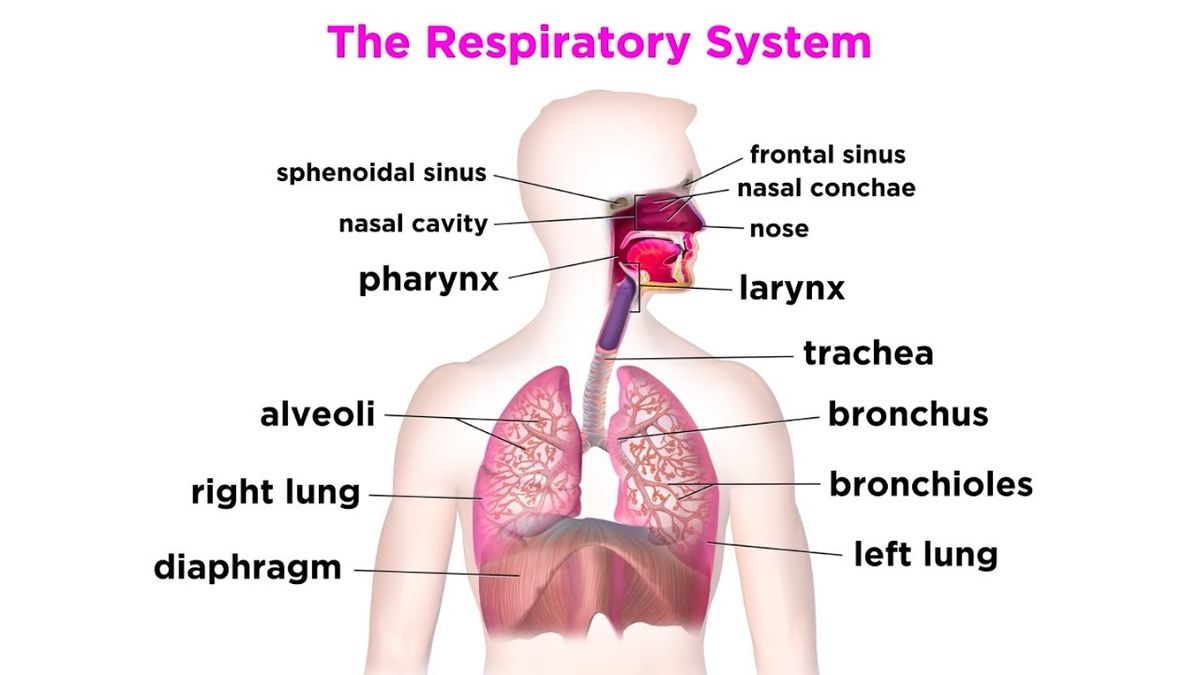The Respiratory System

The respiratory system is a biological system that consists of specific structures and organs that exchange gas in both plants and animals. Its anatomy and physiology vary depending on the size, environment, and evolutionary history of the organism. Here, we'll learn about its different structures, functions, and diseases. Once you understand these, you can better understand your own body and your symptoms.
Functions
The is respiratory system responsible for breathing and transporting oxygen and carbon dioxide into and out of the body. It also carries out metabolic processes that provide essential nutrients and energy to the body. Specialized cells within the respiratory system also produce substances necessary for normal pulmonary function. For example, the pulmonary capillary endothelium contains several enzymes that produce and metabolize naturally occurring vasoactive substances. The metabolic functions of the respiratory system are described in Chapter 10.
After entering the lungs, oxygen diffuses through the alveoli and is exchanged with carbon dioxide waste. The blood then moves to the various parts of the body by way of the heart and pulmonary capillaries. In the meantime, the oxygen-rich blood binds to hemoglobin molecules and is then pumped through the bloodstream. At the same time, carbon dioxide is diffused into the alveoli and carried back to the lungs by the blood.
Structures
The respiratory system has several structures that aid in breathing. First, there are the bronchi, or airways, which carry air between the trachea and the lungs. These structures are comprised of two types: the right and left bronchi. Each bronchus has several branches. These secondary bronchi contain bronchioles and a small amount of smooth muscle. These bronchioles eventually lead to the alveoli, clusters of minuscule air sacs.
The primary bronchi and pharynx are lined with a C-shaped cartilage ring and are flattened circles. The secondary and tertiary bronchi have more cartilage and smooth muscles. The bronchioles are free of cartilage. The bronchi are separated into two different zones: the conducting zone and the respiratory zone. In the latter case, the epithelium is thinner and the respiratory membrane consists of the endothelium of surrounding capillaries. Simple diffusion allows for gas exchange between the two zones.
Diseases
Diseases of the respiratory system include disorders affecting the lungs, airways, and surrounding tissues. They can be caused by infection, exposure to secondhand smoke, and air pollution. Some examples include asthma, chronic obstructive pulmonary disease, pulmonary fibrosis, pneumonia, and lung cancer. In some cases, the disease may be life-threatening. If you suspect that you or someone in your family has respiratory problems, seek treatment from a qualified medical professional.
According to the World Health Organization (WHO), airway diseases are one of the world's biggest health problems. They account for around one sixth of all deaths worldwide. These diseases are caused by a variety of factors, including lung infections, tuberculosis, and chronic obstructive pulmonary disease.
Symptoms
The respiratory system is a complex system that is constantly subject to invasion from bacteria and other microbes. The primary respiratory symptoms are cough, shortness of breath, and chest pain. Other symptoms include hemoptysis, which is blood found in the sputum. Patients with these symptoms should be evaluated by a physician and given the proper tests. Some symptoms of respiratory system disorders include asthma, COPD, and tuberculosis.
Lung function tests have proved to be useful as diagnostic tools. Pulse oximetry tests are also used to monitor oxygen intake into the lungs. A doctor may also collect a swab from the patient's nose or ask him/her to cough up a sample of sputum. These tests are important in determining the type of disease, as some respiratory infections cannot be treated. However, some medications can be prescribed to alleviate the symptoms.
Treatments
The treatment of respiratory failure may involve a variety of methods, including medicines and procedures. In severe cases, a patient may need to be admitted to a hospital for intensive care. For more moderate cases, treatment at home is usually sufficient. People with chronic respiratory failure may benefit from pulmonary rehabilitation. To manage symptoms, individuals should learn to recognize the signs and symptoms of respiratory failure.
The primary function of the respiratory system is to supply the blood with oxygen. Without oxygen, the body would not function properly. In addition, oxygen therapy helps reduce symptoms and shortness of breath. Exercises such as walking and swimming can also help patients improve their condition.



